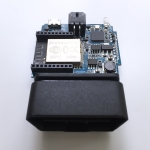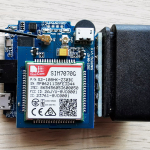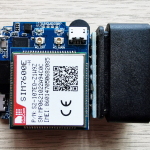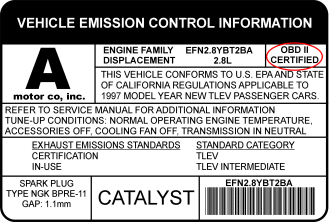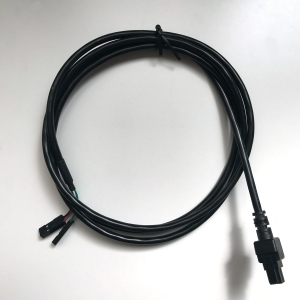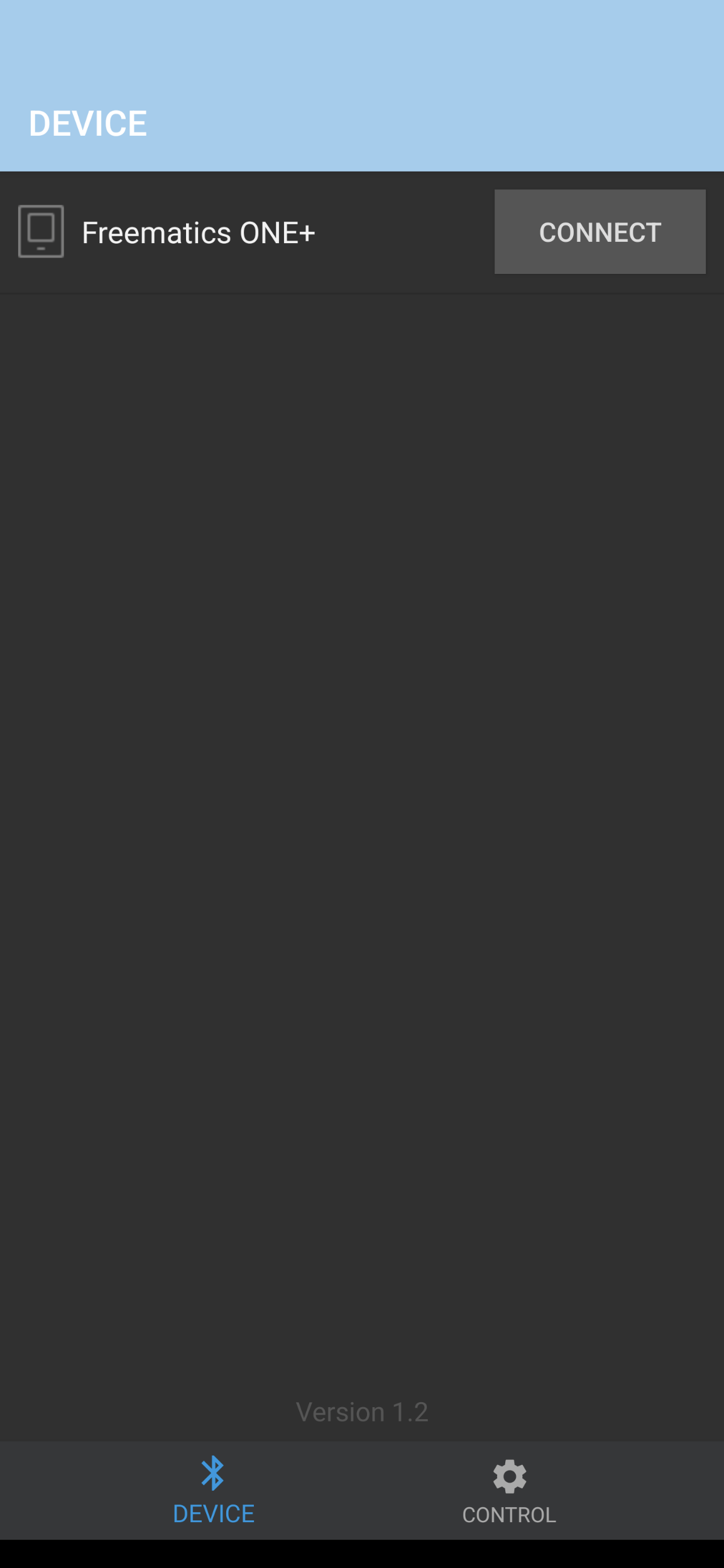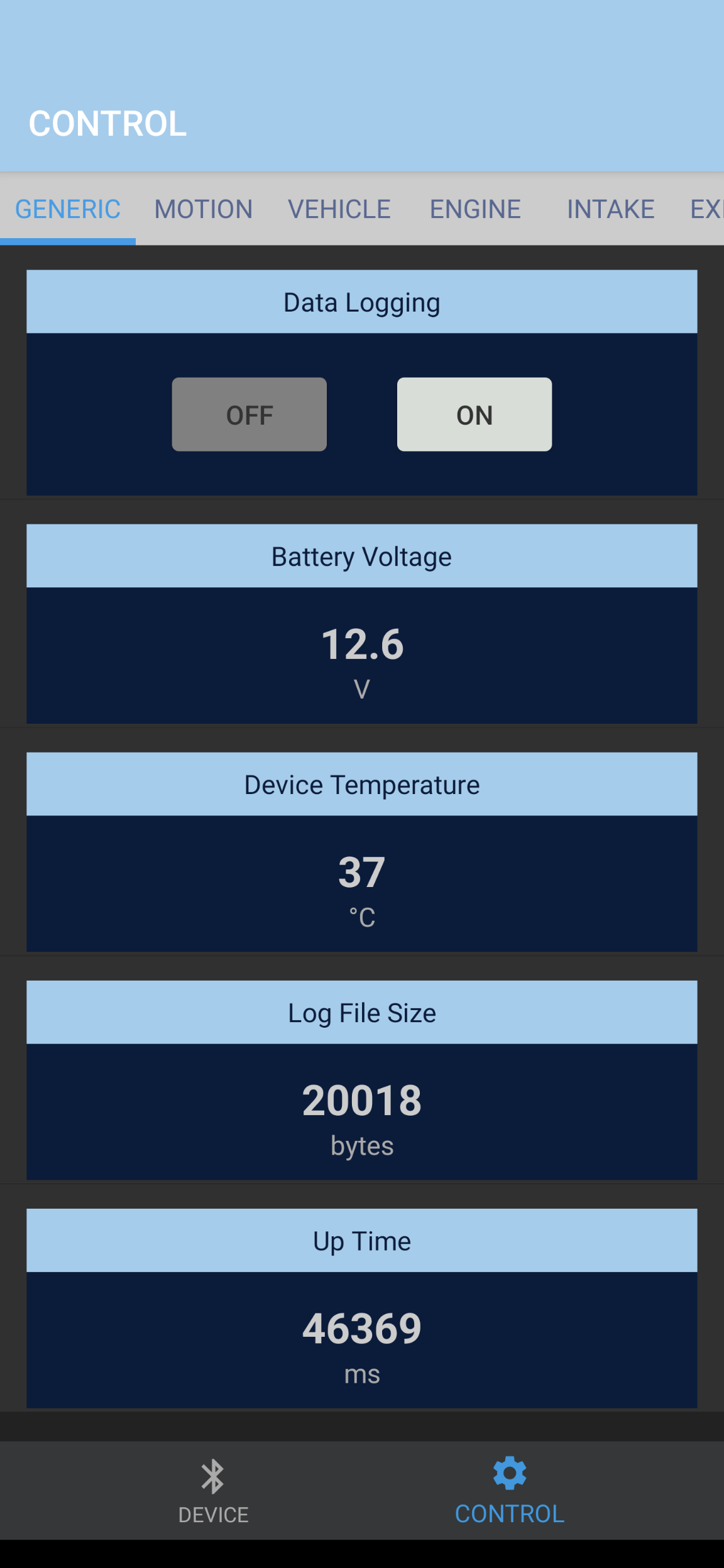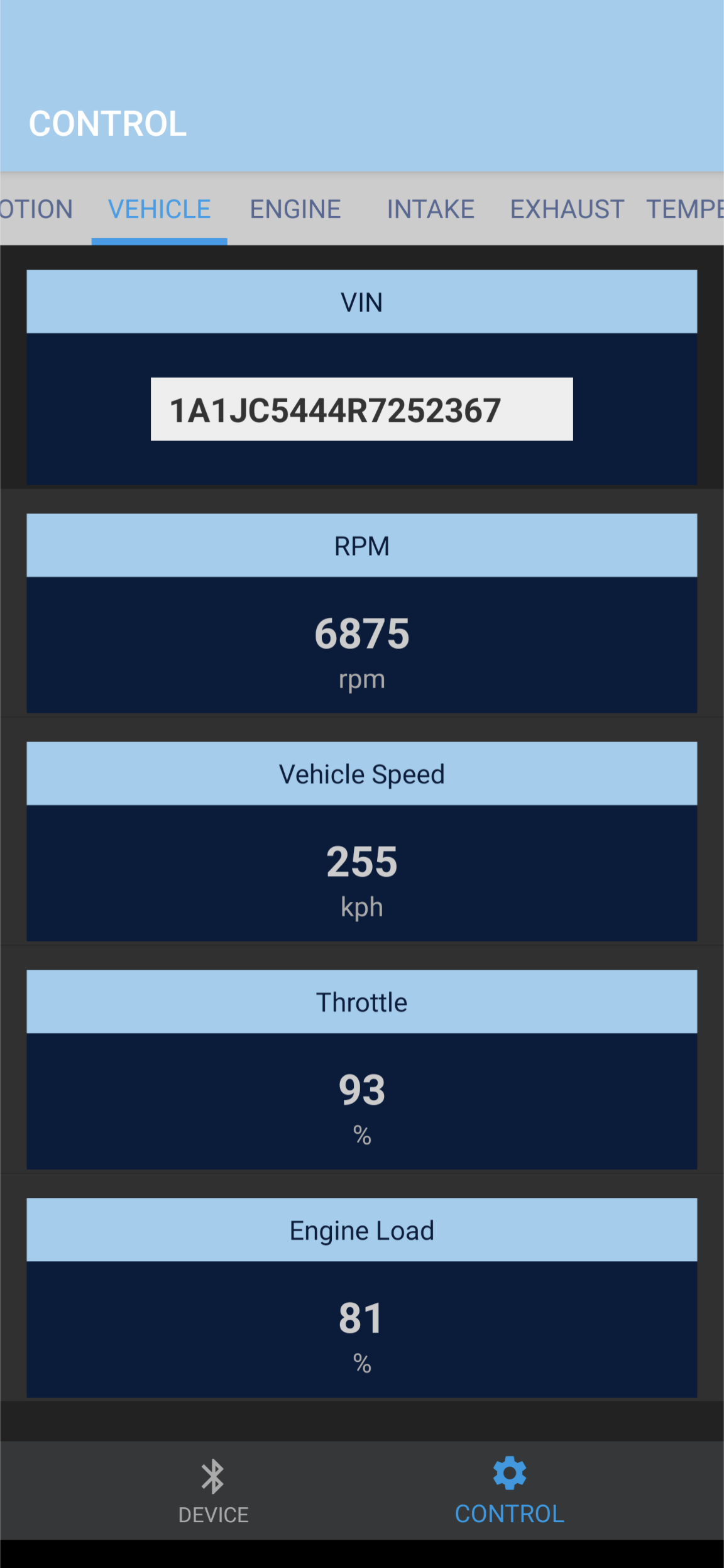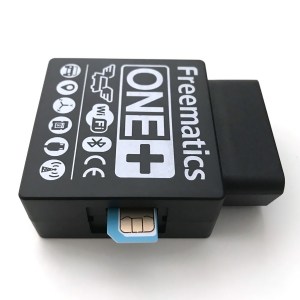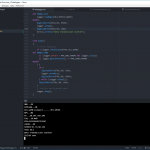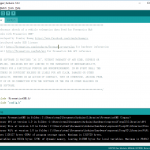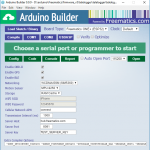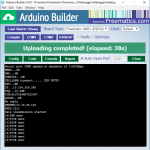Freematics ONE+ is a powerful Arduino programmable vehicle telemetry prototyping platform in form of a OBD dongle that plugs into a vehicle’s OBD port and works as a standalone smart device which can communicate with vehicle’s ECU. It integrates motion sensor and can extend with GNSS receiver or external sensors. Collected data can be processed in real-time with its dual-core CPU, stored in internal Flash or microSD card and transmitted via BLE, WiFi or cellular network. Freematics ONE+ comes with an actively maintained Arduino library and ready-to-go Arduino sketches and open-source telemetry server software.
Features
- Dual-core Arduino programmable SoC with built-in WiFi and Bluetooth
- Access to all standard OBD-II PIDs, DTC, VIN from vehicle ECU
- CAN bus data sniffing
- Geolocation with high accuracy and update rate (requires external receiver)
- G-force measurement and motion detection
- Car battery voltage monitoring
- Massive data storage (microSD up to 32GB)
- Real-time data transmission over WiFi or cellular network
- Configuring and monitoring from mobile device app via BLE
Hardware Facts
Specifications
- Espressif ESP32 main controller (16MB Flash, fully programmable)
- Built-in 802.11 b/g/n Wi-Fi and dual mode Bluetooth (classic and BLE)
- ICM20948 motion sensor
- U-blox m10 GNSS (external receiver, optional)
- Enclosure dimensions: 60x48x20mm
- Typical power rating @80Mhz: 20mA (WiFi inactive) / 50mA (WiFi active)
Physical Interfaces
- OBD-II male connector
- microUSB port
- microSD card slot
- SIM card slot (when cellular module is present)
- I/O socket (Molex)
- xBee socket for cellular module
OBD-II Compatibility
Freematics ONE+ plugs into the OBD port usually located under the steering column. To check if your vehicle is OBD-II certified, open your hood and find the sticker that looks like this:
Vehicles using following vehicle protocols are supported.
- CAN 500Kbps/29bit
- CAN 250Kbps/29bit
- CAN 500Kbps/11bit
- CAN 250Kbps/11bit
- KWP2000 Fast
- KWP2000 5Kbps
External I/O
Freematics ONE+ has an external I/O socket. The 4-pin socket contains 2x I/O pins (ESP32’s GPIO26 and GPIO34), VCC (controllable by ESP32’s GPIO12) and GND, as following.
With a Molex to 2.54 Dupont connector conversion cable, external sensors or controller can be easily connected. On the Dupont connector side, black for GND, red for VCC, white for GPIO34 and green for GPIO26.
GNSS
Freematics ONE+ supports external GNSS receiver connected to the 4-pin I/O connector. The optional u-blox M10 GNSS receiver provides high accuracy (up to 1.5 meters) and high update rate (up to 10Hz). The receiver comes with a 1.5m long cable.
Bluetooth
Freematics ONE+ has built-in dual-mode Bluetooth capability and can work with Freematics Controller App via BLE when datalogger sketch or telelogger sketch uploaded.
Cellular Module
Cellular module is installed in Freematics ONE+ through onboard xBee socket. We provide several options for cellular modules. Following chart compares the 3 types currently available.
| SIM7600E-H | SIM7600A-H | SIM7070G | |
|---|---|---|---|
| Mobile Network Bands | LTE-TDD B38/B40/B41 LTE-FDD B1/B3/B5/B7/B8/B20 |
LTE-FDD B2/B4/B12 | CAT-M B1/B2/B3/B4/B5/B8 /B12/B13/B14/B18/B19/B20 /B25/B26/B27/B28/B66/B85 |
| UMTS/HSPA+ B1/B5/B8 GSM/GPRS/EDGEB3/B8 |
UMTS/HSPA+ B2/B5 | CAT-NB B1/B2/B3/B4/B5/B8 /B12/B13/B18/B19/B20 /B25/B26 /B28/B66/B71/B85 |
|
| Data Transfer Speed | LTE CAT4: 50Mbps(UL) 150Mbps(DL) HSPA+: 5.76Mbps(UL), 42Mbps(DL) UMTS: 384Kbps EDGE: 236.8Kbps GPRS: 85.6Kbps |
LTE CAT4: 50Mbps(UL) 150Mbps(DL) HSPA+: 5.76Mbps(UL), 42Mbps(DL) UMTS: 384Kbps EDGE: 236.8Kbps GPRS: 85.6Kbps |
CAT-M: 589Kbps(DL)/1119Kbps(UL) CAT-NB: 127Kbps(DL)/158.5Kbps(UL) EGPRS: 296Kbps(DL)/236.8Kbps(UL) |
| Regions | Europe, Asia, South America, Australia | North America (AT&T Certified), Australia (Telstra) | Global |
SIM Card
A micro SIM card is needed for using cellular network and is inserted as shown below.
MicroSD
Freematics ONE+ has a microSD slot under the side cover which is connected to ESP32 via SPI. Standard Arduino SD library can be used for microSD card access.
Low-Power Mode
Freematics ONE+ enters and leaves low power mode programmatically. In low power mode with all peripherals (GPS, GSM, WiFi) powered off, the power consumption is around 10mA. This prevents car battery from going flat while the main controller is still able to run code and perform low-power tasks like motion detection by MEMS sensor.
Schematic
The schematic is here. It is subject to change and may not always be up-to-date.
Freematics ONE+ vs Freematics ONE
| Freematics ONE+ | Freematics ONE | |
|---|---|---|
| Programmable Processor | 32-bit Dual-Core @ 240Mhz | 8-bit AVR MCU @ 16Mhz |
| Real-time Operating System | FreeRTOS (multi-threading) | N/A |
| Development Environment | Platform IO, Arduino IDE etc. | Platform IO, Arduino IDE etc. |
| Arduino Library Features | OBD-II/GPS/MEMS access, WiFi and cellular networking |
OBD-II/GPS/MEMS access |
| WiFi | Built-in 802.11 b/g/n (SDK) | N/A |
| Bluetooth | Built-in BLE+BT (SDK) | Optional BLE by CC2541 module (serial) |
| External I/O | 2x 3.3V GPIO for digital I/O, analog input, serial UART | 2x 5V digital I/O or analog input |
| Cellular Module | GSM/GPRS/WCDMA/LTE bee module, direct access (UART) | GSM/GPRS bee module |
| Program Space | 16MB Flash + 520KB RAM | 32KB Flash + 2KB RAM |
| Data Storage | microSD or internal Flash | microSD |
| Device LED | GPIO controlled + communication indicator | Communication indicator |
| Suitable Applications | Real-time processing and logging for massive data sampled at high rate, low-latency data transmission with various protocols over BLE, WiFi or cellular network | Local data logging and simple data transmission over cellular network |
Development
The most exciting thing about this product is that you can create your own unique product or solution on top of our massive accomplished work. We have been developing and maintaining a dedicated Arduino library for easy access to all hardware resources and a set of fully functional reference Arduino sketches for this product. So there is no need to start from scratch. As long as you have some basic knowledge about Arduino, you are good to go. Together with our Freematics Arduino Builder which allows configuring, compiling and uploading Arduino sketches in one simple GUI, we intend to bring the best out-of-box experience for non-professional developers. If you are a pro, we recommend PlatformIO IDE as development environment and our reference code is organized as PlatformIO projects as well, though you can still use Arduino IDE or Arduino makefile with ESP-IDF. For more information about development, please refer to the Developers Guide.
Shipping List
- Freematics ONE+ x 1
- Micro USB cable x 1 (optional)
- GNSS Receiver x 1 (optional)
- Cellular Module x1 (optional, plugged-in)
- MicroSD card (optional, inserted)
Links
- Arduino Library
- Sample Arduino Sketches
- Developers Guide
- Tutorial: Setting up a vehicle tracking system on Linux box with Freematics ONE+
- Telelogger with ESP-IDF
Order
You can quickly place your order from this page with optional accessories for your selection.



